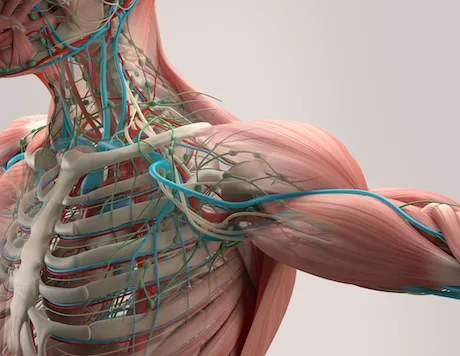Definition of ‘Regular Osteopathic Treatment’
So what exactly do I mean when I talk about ‘Regular Osteopathic Treatment’?
Regular treatment is just that, a treatment regimen which is given to you by your Osteopath, and used on a regular basis, and by that I mean that you have it regardless of whether you’re in pain or not. (Why? – I’ll get to that bit in a minute).
‘Treatment’ may include exercise and/or stretches that you need to do between visits to your Osteopath, these will be shown to you during the sessions.
How regular is regular?
How regular your treatment is, depends upon the individual circumstances surrounding your own life. It will also depend on what suggested amendments you are given (such as doing stretches and/or small amounts of exercise on a daily basis), and whether you are able to commit to doing the suggested exercises and/or stretches.
You may also need to make some ergonomic changes at work, or at home. This may reduce strain on your body when at a computer, or watching the TV, for example.
Potentially, there are major changes needed in order to get you out of pain, such as if your pain is made worse by your job. If a job change is not possible or not favourable to you, then you may need weekly treatment for a long time to help with the adverse effects that result. But don’t worry, there will be plenty of advice on what you can do to lessen the amount of times you need to see me and so long as you are willing to follow the advice, then all will be well.
Remember, you will only ever need to see me as and when is necessary for your individual circumstances, no more than that.
Why should I come back for regular treatments when I’m pain free?
People who have regular treatment usually find that they are less likely to have acute pain episodes when they are going about their daily lives, doing things which previously would have produced pain, such as sports or recreational activities, work related activity and gardening.
At his point, you may be thinking that whatever I have to say about it, is likely to be biased and you may well be right, so let’s get some impartial advice and see what the NHS has to say on the matter.

Osteopathy is [the Philosophy of] detecting, treating and preventing health problems by moving, stretching and massaging a person’s muscles and joints.
Osteopathy is based on the principle that the wellbeing of an individual depends on their bones, muscles, ligaments and connective tissue functioning smoothly together.
Improved mobility & vitality
Osteopaths use physical manipulation, stretching and massage with the aim of:
- increasing the mobility of joints
- relieving muscle tension
- reducing pain
- enhancing the blood supply to tissues
- helping the body to heal
They use a range of techniques, but not medicines or surgery.
In the UK, osteopathy is a health profession regulated by UK law.
“So what?” I hear you say, “what does all this moving the joints and muscles around have to do with my general health? and why should I keep coming back to see you?” Ok, I hear you – keep reading.
Why do we need mobility & vitality?
Mobility
Mobility at a macro and micro-cellular level is essential for life. Hippocrates said “If we could give every individual the right amount of nourishment and exercise, not too little and not too much, we would have found the safest way to health.” suggesting that even back then (460-375bc), it was known that adequate movement and a wholesome diet are the best medicine for optimal health. But what about nowadays? what sorts of explanation is there for increasing movement in a body?
In Osteopathy, we seek to increase movement in each joint so as to rejuvenate not just the joint itself, but also the surrounding tissues in the joint and that will include the arteries, veins, lymphatic tissues as well as the nerves that have direct connections to our organs, our viscera. In this way, Osteopaths can help to improve the vitality of a person.

Vitality
Vitality is the essence within us that we can feel as our own core energy, it helps provide our enthusiasm for what is going on in our life, and our desire to not just mentally and emotionally want to, but actively be able to take part in it.
It is also the underlying force within each cell that allows it to be healthy, which in turn allows the cell to do all that it should do, without mutating and becoming a danger to us, like cancer is for example. If you have poor vitality, you may feel run down, ‘out of sorts’, or you may be in a very poor state indeed with all the above and more.
This definition of vitality describes it as “a term used to describe a person’s ability to live, grow, and develop. Vitality also refers to having energy and being vigorous and active. Being ill or being treated for a disease, such as cancer, may lessen a person’s vitality.”
Remember that illness is rarely symptomatic in its very early stages. Restrictions in mobility can lead to cells not being given adequate nutrition and becoming congested due to excess tension in surrounding muscles. This is where the philosophy of Osteopathy plays its part in rediscovering true health.
Osteopathy
Osteopathy is not a cure all, it will not help you recover from cancer for example. There a number of common problems which do respond to Osteopathic treatment. Common examples include Osteoarthritis, neck pain, low back pain, joint pain, muscle strains, ligament sprains. Other conditions we can help include irritable bowel and headaches.
However, quite often people with low vitality are on the precipice of travelling down the dark road to pathology. This is where disease and poor health lurk.
I believe that these people can be helped using Osteopathy, so long as they are willing to play their part and strictly follow their treatment plans. This includes taking their time with Osteopathic treatment and trusting the word of their practitioner about how much time their treatment plan may take, including following any lifestyle advice given at consultation.
How long does the average treatment plan last?
The answer is of course that ‘it’s quite variable’ and depends upon the individual person and their own circumstances. Here are a couple of examples:
- A 20 year old, active, non smoking male, with no history of any aches or pains. He comes in mid way through his end of year university exams with stress related headaches and neck tension. Commonly, this man may need just 3 or 4 sessions to get him feeling ‘like new’ again. This would depend upon his medical history though, conditions such as asthma may change this.
- A 54 year old female who’s a smoker and has had 3 children, two of them born by caesarean. She presents with a recent onset of acute neck pain and stress related headaches. Her pain has ‘grumbled away’ for many years, but recently become worse. She will definitely need more than 3 or 4 sessions to feel a significant change and ‘feel new’ again.
It’s likely that the lady will have degenerative changes in her neck. There is always the possibility that the pain is there due to her history of smoking. Looking on the positive side, pain relief is very, very likely in most cases. If she were to discuss a plan of Osteopathic treatment with her local Osteopath, positive results would likely follow.
Follow the advice
A key point to make is the importance of following the treatment plan in its entirety. This is the same as when you are prescribed medicine by your doctor. You take the full dose to get the full effect. In the case of a chronic health condition, you have to take it for a long time. With Osteopathy, it’s not that different. It does usually have far less side effects and as a rule, is much more enjoyable.
To put this in context with someone like the 54yr old lady mentioned previously, if she followed the advice given and returned for as many treatments as is necessary, (but no more than is genuinely required) she could bring about real, lasting change.
Ideally for her, the amount of treatments needed would be beyond the amount of time it takes for her to become pain free, as her pain is likely to be an expression of a breakdown in her body’s ability to cope, meaning that true reversal may take a while longer than you might expect.

The time taken to work with a chronic problem can be variable depending on the exact causes. This is the reason I can’t quote exactly how many treatments it would take to resolve a chronic pain problem. Because to do so would just be dishonest and that’s not me.
Causes of pain
Whilst we do occasionally see traumatic and sinister causes of pain in our clinic, most of the pain causing conditions that we see are a result of many years of built up tension which the body just can’t cope with anymore. This is the point at which we see people, when their allostatic load (the cumulative burden of chronic stress and life events) becomes too great for them to bear.
Cost of Osteopathic treatment vs the cost of failing to maintain yourself
It’s true that in the case of the lady above, her treatment plan will take much longer than the younger man. That doesn’t mean that she can’t expect satisfactory results in the end.
Perhaps the question you should be asking is, ‘what price should I put on my own health and well-being?‘. I mean, you do service your car don’t you? How would it run if you didn’t take care of it?
Applying the same logic to your own body would likely get better results when you ask anything of it. It makes sense doesn’t it?
Ask the right questions of us and of yourself
If you’re asking “what difference does it make if you’re a smoker who’s had a C-section? – then you’re starting to ask the right questions.
There are of course lots of different potential causes of problems in our bodies. Some are very worthy of a conversation.
Whilst I’m working with you in the consulting room, I’ll be happy to tell you. Ill also talk about how I’m helping you and the relevance of the type of treatment being offered.

If there’s anything else you want to know, then book in to see me and ask during the consultation.


